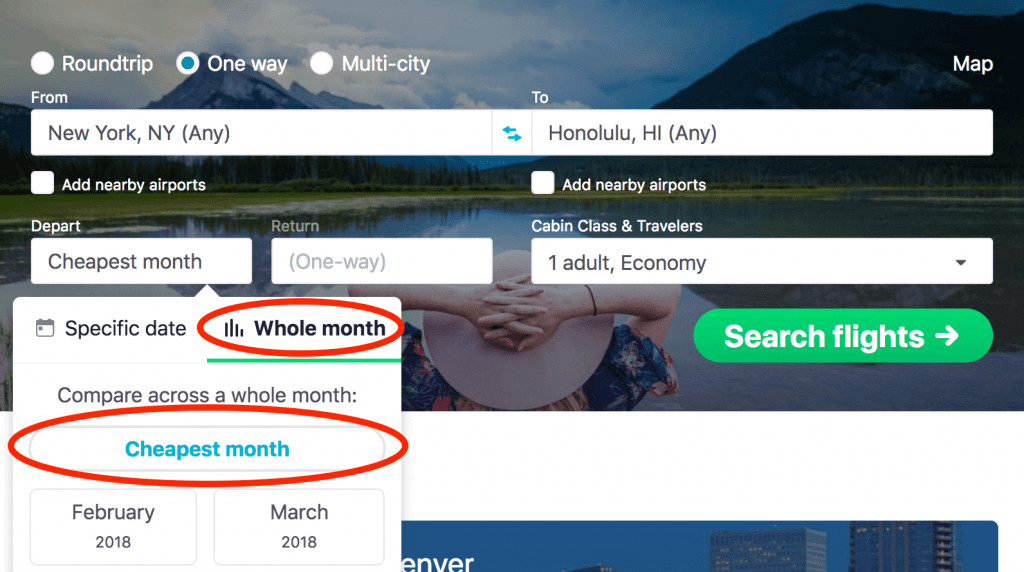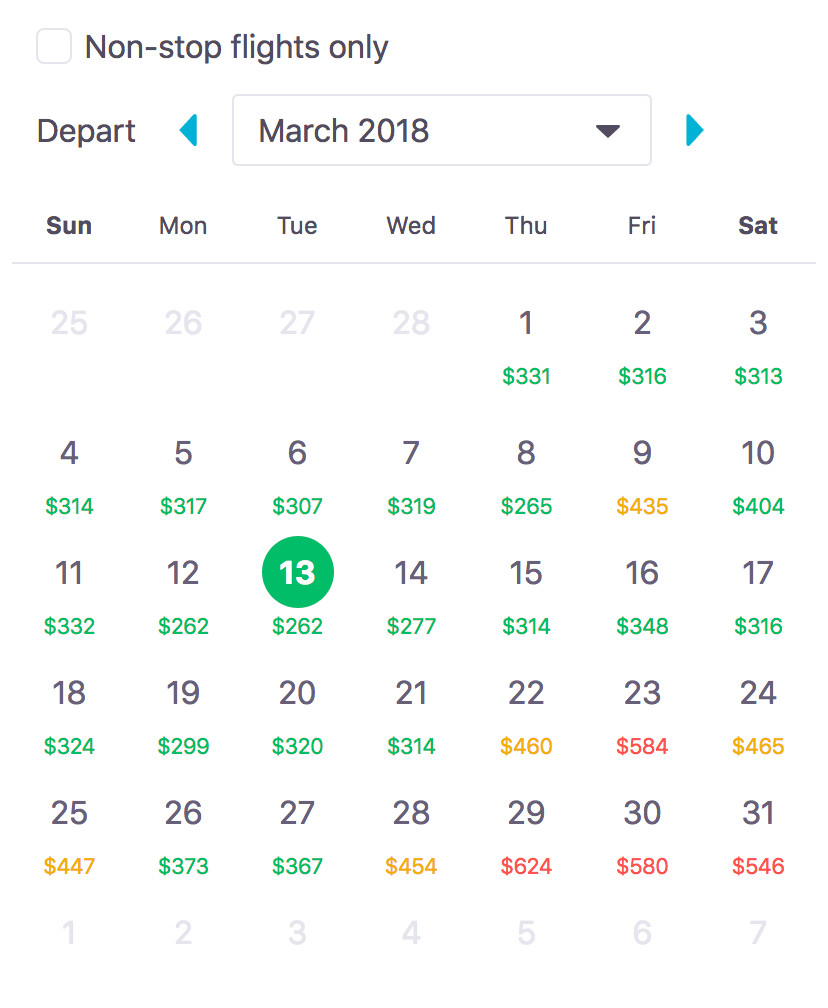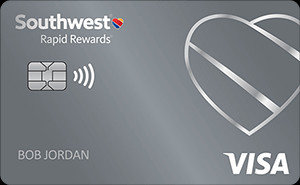Booking flights can often feel like navigating a maze of fluctuating prices and confusing options. The dream of snagging a cheap flight to your dream destination can quickly turn into a frustrating cycle of endless searches and rising costs. But what if it didn’t have to be that way? What if there were proven strategies to consistently find and book the cheapest flights available, no matter where you want to go? This comprehensive guide is your roadmap to mastering the art of budget air travel, packed with actionable tips and insider knowledge to save you time, stress, and most importantly, a significant amount of money on your next flight. Get ready to unlock the secrets to flying cheap and make your travel dreams a reality without breaking the bank.
1. Go Incognito: Keep Your Flight Searches Secret
Have you ever noticed flight prices mysteriously increasing after searching for the same route multiple times? It’s not just your imagination. Airlines and booking sites use cookies to track your searches. When they detect repeated interest in a particular flight, they often raise the price to create a sense of urgency and pressure you into booking quickly. To avoid this price manipulation, always browse for flights in incognito or private browsing mode.
 Incognito mode example on a web browser
Incognito mode example on a web browser
In Google Chrome or Safari, activate incognito mode by pressing Command (or “Control” on PC), Shift, and “N” simultaneously. For Mozilla Firefox or Internet Explorer, use Command (or “Control”), Shift, and “P”. This opens a new browser window that doesn’t track your browsing history or cookies, ensuring you see the lowest possible prices.
For an even cleaner search, close all incognito windows before each new flight search. This resets your cookies and prevents any previous searches from influencing current prices, giving you a fresh start every time you look for cheap flights.
2. Utilize the Best Flight Search Engines for Cheap Flights
While all flight search engines take a commission, some inflate prices more than others. To find the real deals, it’s crucial to use search engines known for displaying the most competitive prices.
Top Search Engines for Booking Cheap Flights:
- Skyscanner: Consistently ranks as a top choice for finding the cheapest flights. Its flexible search options and price comparison across numerous airlines make it a powerful tool for budget travelers.
- Momondo: Known for its comprehensive search results, often uncovering deals that other engines miss. Momondo searches a wide range of airlines, including budget carriers, to ensure you see the lowest fares.
- Kiwi.com: Excels at finding unique and often cheaper routes by combining different airlines, including budget airlines. Kiwi.com’s “Nomad” feature is also excellent for multi-city trips.
- Google Flights: Offers a user-friendly interface and powerful features like price tracking and calendar view to identify the cheapest dates to fly. Google Flights is especially helpful for exploring destinations and monitoring price fluctuations.
While most budget airlines are now included in these search engines (except Southwest Airlines), for complete assurance, especially in specific regions, consider a separate search for regional budget carriers.
Remember, no single search engine is flawless every time. It’s best practice to use a combination of these recommended platforms to ensure you aren’t overlooking any potential deals. Start with Skyscanner or Momondo, and then cross-reference with others to confirm you’ve found the absolute lowest price.
3. Pinpoint the Cheapest Days to Fly
Forget the outdated myth about Tuesdays being universally the cheapest day to fly. The truth is, there’s no fixed day of the week that guarantees the lowest airfare. While weekdays are often cheaper than weekends, this isn’t always the case and varies by route and season. The most effective strategy is to visualize flight prices across an entire month to identify the cheapest days for your specific journey. Here’s how to do it using Skyscanner:
Step-by-Step Guide to Finding the Cheapest Flight Dates on Skyscanner:
Step 1: Visit the Skyscanner website or open the Skyscanner app.
Step 2: Enter your departure and arrival cities.
Step 3: Select “One-way,” even for round trips, initially focusing on finding the cheapest outbound and return dates separately.
Step 4 (Computer): Click the “Depart” date field. Instead of selecting specific dates, choose “Whole Month” and then “Cheapest Month.” Click “Search flights.” This will display a calendar view, clearly highlighting the cheapest dates to fly each day of the month.
 Skyscanner search by cheapest month example
Skyscanner search by cheapest month example
 Skyscanner cheapest date to fly calendar view
Skyscanner cheapest date to fly calendar view
Step 4 (Mobile App): Tap the departure date, then switch the view to “Chart.” Swipe left and right to browse through months and easily identify the cheapest dates, indicated by the lowest bars in the chart. Tap a bar to see the exact price for that date.
Repeat these steps for your return flight to find the cheapest dates for your entire trip. While you can book a round-trip ticket in one go, determining the cheapest outbound and return dates beforehand ensures you select the most economical combination.
Platforms like Kiwi.com and Google Flights offer similar monthly calendar views, along with map features to visualize airport locations. For detailed price tracking and fluctuation analysis, consider using Hopper, which predicts the best time to book and fly for your chosen route.
4. Fly for Free by Leveraging Travel Points and Miles
The ultimate cheap flight is a free flight, and the easiest way to achieve this is through travel rewards points. If you’re not currently earning points, it’s surprisingly simple to start. Signing up for just one strategic travel rewards credit card and meeting the initial spending requirement can earn you a substantial bonus – often enough for a free flight!
You can opt for an airline-specific rewards card, accumulating points within a particular airline’s loyalty program, or a more versatile general travel rewards card, offering redemption options across various airlines and travel expenses.
For beginners, the Chase Sapphire Preferred Card is highly recommended. It often offers a generous sign-up bonus of points after meeting a minimum spending requirement within the first few months of account opening. These points can be redeemed for travel through Chase Ultimate Rewards, frequently providing a value that can cover a significant portion or even the entire cost of a flight. Furthermore, this card includes valuable travel protections like trip cancellation insurance, rental car collision damage waiver, and lost luggage insurance, along with no foreign transaction fees, making it an excellent all-around travel companion.
 Chase Sapphire Preferred Card image
Chase Sapphire Preferred Card image
Chase Sapphire Preferred® Card
- Generous Bonus: Earn a substantial bonus points after meeting the minimum spend within the first 3 months.
- Earning Rewards: Earn points on travel, dining, streaming services, online groceries and all other purchases.
- Redemption Value: Points are worth more when redeemed for travel through Chase Ultimate Rewards.
- Travel Protections: Includes trip cancellation/interruption insurance, auto rental collision damage waiver, and lost luggage insurance.
- Transfer Partners: Transfer points to leading airline and hotel loyalty programs.
- No Foreign Transaction Fees: Ideal for international travel.
For business owners, the Chase Ink Business Preferred® Credit Card is another excellent option. It often features an even larger bonus points offer after meeting a higher minimum spend within the initial months. These points can be redeemed for business travel expenses and offer valuable rewards for business-related purchases.
To maximize your points, use your travel rewards card for everyday spending, treating it like cash and paying your balance in full each month to avoid interest charges. This way, you accumulate points effortlessly on your regular expenses, effectively earning free flights over time!
For in-depth strategies on mastering points travel, explore guides dedicated to maximizing travel credit card rewards and points programs.
5. Embrace Budget Airlines for Discounted Fares
Budget airlines are your best allies in the quest for cheap flights. They offer significantly lower ticket prices compared to full-service airlines by stripping away frills. This trade-off usually means less legroom and pay-as-you-go for onboard food and drinks, which are often factored into the higher fares of traditional airlines.
If you’re open to flying budget, it’s a highly effective way to cut travel costs. Before booking, familiarize yourself with the specifics of budget airlines. Key considerations include:
Important Considerations When Booking Budget Airlines:
- Airport Location: Budget airlines sometimes fly into secondary airports located further from the city center. Check the airport location to factor in potential transportation costs and travel time to your final destination.
- Baggage Allowance and Fees: Carefully pre-book and pay for your luggage allowance. Budget airlines strictly enforce weight, size, and number of bags. Excess baggage fees can be substantial, often negating the initial savings. Only pay for the luggage space you actually need to keep costs low.
- Read the Fine Print: Budget airlines often have strict policies. For example, some airlines charge hefty airport check-in fees if you fail to check in online in advance and print your boarding pass or use their mobile boarding pass. Always thoroughly read your booking confirmation and follow all instructions to avoid unexpected fees.
Adaptability and research are key to successful budget airline travel. Understand their requirements and restrictions to take full advantage of their low fares without encountering unexpected costs.
Global List of Budget Airlines:
(Note: Red indicates ultra-budget airlines; Blue indicates generally cheapest options where true budget airlines are limited)
(List of Airlines – As per original article, to be populated with markdown formatting for readability)
If your travels take you to regions served by these budget airlines, monitor their websites and social media channels for flash sales and promotions. Airlines like Air Asia, Jetstar, Tiger Air, and Ryanair are particularly known for frequent deals.
 Southwest Airlines Rapid Rewards Credit Card image
Southwest Airlines Rapid Rewards Credit Card image
Many budget airlines offer their own airline rewards credit cards, often with attractive signup bonuses. For example, the Southwest Rapid Rewards® Plus card from Chase offers a Companion Pass, allowing a companion to fly with you for almost free every time you purchase or redeem points for a flight. However, for broader flexibility, a general travel rewards credit card like the Chase Sapphire Preferred Card often provides more versatility in redeeming points across various airlines.
For a more comprehensive list of low-cost carriers worldwide, Wikipedia offers a detailed resource, though their definition of “low-cost” may vary. Nevertheless, it’s a useful starting point for researching budget airline options in specific countries or regions.
6. Hunt for Airline Error Fares and Flash Sales
Airlines sometimes make mistakes when publishing fares, resulting in deeply discounted “error fares.” These errors can arise from currency conversion glitches, technical malfunctions, or simple human oversight. Being aware of where to find these error fares can lead to substantial savings, sometimes hundreds of dollars per ticket.
Popular platforms dedicated to tracking sale and error fares include:
- Going (formerly Scott’s Cheap Flights): Primarily focuses on deals for US departures. Going has a team that actively searches for flight deals and error fares, sending alerts directly to your inbox. They offer both free and premium subscription options, with premium members receiving access to even more deals and deeper discounts.
- Dollar Flight Club: Catches international deals. Similar to Going, Dollar Flight Club scouts for flight deals and error fares worldwide, notifying subscribers via email. They also offer premium memberships for expanded deal access.
Other valuable resources for finding mistake fares and sale prices include Airfarewatchdog, Kiwi.com Deals, and Secret Flying. These sites aggregate slashed ticket rates in one place, making it easier to spot exceptional deals.
You can also proactively search for error fares yourself. Utilize Skyscanner’s monthly calendar view (Tip #3) to scan for unusually low fares compared to typical prices for your route. Significant price drops can often indicate an error fare.
7. Book Connecting Flights Separately for Potential Savings
If your journey involves connecting flights, especially for long-haul routes, consider booking each leg separately. For example, flying from North America to Australia often involves a connection in Los Angeles (LAX). It might be cheaper to book the North America to LAX leg and the LAX to Australia leg as separate tickets. This strategy can unlock savings by allowing you to utilize different airlines for each segment, potentially including budget carriers.
Important Note: When booking connecting flights separately, avoid tight layovers. This approach is best suited for travelers willing to create a multi-day stopover in the connecting city before continuing their journey. The exception is booking through Kiwi.com, which offers a connection guarantee even when flights are with different airlines.
Research budget airline options for both your origin and destination countries. For instance, booking a flight from Sydney to Honolulu with a budget Australian airline (like Jetstar) and then a separate flight from Honolulu to your final North American destination with a US-based budget carrier can yield significant savings. This approach also opens opportunities for extended layovers, allowing you to explore an additional destination at a reduced cost.
 Skyscanner multi-city stopover search example
Skyscanner multi-city stopover search example
Use search engines like Kiwi.com and Skyscanner, which excel at uncovering cheaper routes involving multiple airlines and stopovers. Skyscanner’s multi-city search feature allows you to plan multi-day layovers, effectively turning a layover into a mini-vacation at little to no extra cost.
8. Discover the Cheapest Destinations to Fly To
If you have flexibility in your destination and are primarily driven by finding the cheapest flight, Kiwi.com offers a powerful “Explore” feature. Simply enter your departure city and desired travel dates (or date range). Kiwi.com will then display a world map showcasing approximate flight costs to various countries around the globe, sorted from the cheapest destinations to the most expensive. This is an excellent tool for inspiring travel and discovering budget-friendly destinations you might not have considered.
 Kiwi.com flight search explore map view
Kiwi.com flight search explore map view
9. Mix and Match Airlines for Optimal Savings
Kiwi.com’s strength lies in its ability to intelligently combine flights from different airlines, including budget carriers, to find the absolute lowest fares. Traditional search engines often prioritize routes within a single airline alliance. Kiwi.com breaks this mold, searching across a vast network of airlines to create unique and cost-effective itineraries.
For example, a standard search for a flight from Washington, D.C. to Rome, Italy, on a typical platform might suggest a route with a single airline and its partners. Kiwi.com, on the other hand, might identify a significantly cheaper route by combining flights from different airlines, potentially including budget airlines for different legs of the journey.
While booking with multiple airlines separately can carry risks (e.g., missed connections due to delays on non-partner airlines), Kiwi.com mitigates this with its Kiwi.com Guarantee. This guarantee covers flight disruptions, including schedule changes, delays, and cancellations. If you encounter a problem, Kiwi.com will arrange an alternative connecting flight or provide a full refund, offering peace of mind when booking itineraries involving multiple airlines.
10. Consider Hidden City Ticketing (Use with Caution)
“Hidden city” ticketing is a controversial tactic where you book a flight with a connection in your desired city but with a final destination beyond it. The connecting flight is sometimes cheaper than a direct flight to your desired city. You then disembark at the connection city and skip the final leg of the flight.
 Skiplagged hidden city ticketing example
Skiplagged hidden city ticketing example
Risks and Considerations of Hidden City Ticketing:
- Checked Luggage: If you check luggage, it will likely be routed to the final destination, not your intended stopover city. Hidden city ticketing is best suited for carry-on luggage only.
- Boarding Issues: In rare cases, airlines might prevent you from deplaning at the connection city if the same aircraft is continuing to the final destination.
- Airline Penalties: Airlines are actively against hidden city ticketing and may detect if you skip a flight segment. Consequences can range from losing frequent flyer miles to potential account closure.
Websites like Skiplagged specialize in finding hidden city tickets. However, use this method with caution and be fully aware of the potential risks. It is a grey area and is against most airline’s terms of service.
11. Buy Flights in Bulk for Potential Discounts
Generally, booking multiple flight tickets together can lead to better value, particularly when booking round-trip or multi-city itineraries with the same airline or airlines within the same alliance (e.g., Star Alliance, SkyTeam, Oneworld). For example, a round-trip ticket is usually cheaper than booking two separate one-way tickets on the same route and airline.
This principle also applies to multi-city flights. Airlines like Virgin Atlantic, for example, offer routes between major global hubs. Booking a complete loop, like New York City to London, London to Shanghai, and Shanghai back to New York City, as a single multi-city itinerary can be significantly cheaper than booking each leg individually. Use the multi-city search function on Skyscanner or similar platforms to explore these options.
Round-the-world tickets and regional passes are another form of bulk flight purchase. Offered by airline alliances, these tickets provide discounted fares for extensive travel around the world, a continent, or within a specific region.
However, always compare multi-city and round-trip fares against booking separate flights, especially when budget airlines are involved. Sometimes, combining individually booked budget airline flights can still be more cost-effective than alliance-based tickets.
12. Don’t Overlook Local and Regional Airlines
While major search engines are excellent, they may not always include smaller, regional airlines, particularly for less popular routes or remote destinations. When traveling to less-traveled areas, research local airlines. A quick Google search or local inquiries can reveal regional carriers that might offer cheaper flights not listed on mainstream platforms.
Even if a local airline appears in search engine results, it’s often worth visiting the airline’s website directly. Airlines sometimes offer exclusive online deals or promotions not advertised on third-party search engines. Always double-check the airline’s official site for potential savings.
13. Book Flights Sooner Rather Than Later (Especially if Dates are Fixed)
The common wisdom is that flight prices increase as your departure date approaches, and this is generally true, especially if you need to fly on specific dates. Budget airlines often operate on a yield management model, with base fares starting low and increasing as seats fill up. This is particularly prevalent in regions like Europe and Australia.
If your travel dates and destination are firm, booking in advance is usually the best strategy to secure the lowest possible fare. Waiting for last-minute sales is often a gamble, and you risk higher prices and limited availability.
14. Check for Currency Exchange Rate Savings
Before finalizing your flight booking, explore whether paying in a different currency could result in savings. Budget airlines, in particular, sometimes default to charging in the currency of your departure country, but this isn’t always the cheapest option.
Important: If paying in a foreign currency, use a credit card with no foreign transaction fees, such as the Chase Sapphire Preferred Card. Otherwise, any potential savings from currency exchange rates could be offset by foreign transaction fees. Consult resources on the best travel credit cards to ensure you’re using a fee-free card for international transactions.
The Thrifty Traveler’s Summary
- Utilize the Right Search Engines: Skyscanner is a top recommendation for finding cheap flights and uncovering error fares.
- Seek Out Error Fares and Sales: Sign up for free alerts from Going to be notified of deeply discounted fares.
- Search Incognito: Always browse for flights in incognito mode to avoid price increases based on your search history.
- Earn Travel Points: Leverage travel rewards credit cards like the Chase Sapphire Preferred Card to earn points redeemable for free flights.
- Consider Separate and Extended Layovers: Explore booking connecting flights individually and consider extending layovers to visit multiple destinations for the price of one.
- Buy in Bulk: Round-trip and multi-city tickets are often cheaper than multiple one-way bookings.
- Book in Advance: Secure the best prices by booking flights well ahead of your travel dates, especially if your travel dates are inflexible.
Do you have any additional tips for finding cheap flights? Are there any budget airlines we’ve missed in our list? Share your insights in the comments below and help fellow travelers fly cheaper! For more travel tips and guides, follow us on social media and subscribe to our newsletter.
(Affiliate disclosure and credit card partnership disclaimers as in the original article)
